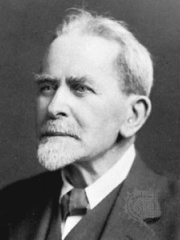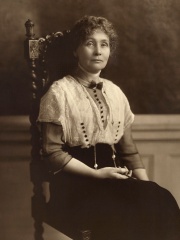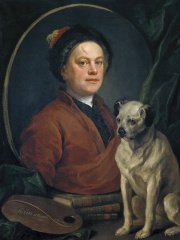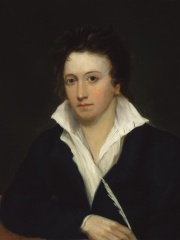WRITER
Graham Greene
1904 - 1991

 Graham Greene
Graham Greene
Henry Graham Greene (2 October 1904 – 3 April 1991) was an English writer and journalist regarded by many as one of the leading novelists of the 20th century. Combining literary acclaim with widespread popularity, Greene acquired a reputation early in his lifetime as a major writer, both of serious Catholic novels, and of thrillers (or "entertainments" as he termed them). He was shortlisted for the Nobel Prize in Literature several times. Through 67 years of writing, which included over 25 novels, he explored the conflicting moral and political issues of the modern world. Read more on Wikipedia
His biography is available in 81 different languages on Wikipedia. Graham Greene is the 404th most popular writer (up from 457th in 2024), the 389th most popular biography from United Kingdom (down from 330th in 2019) and the 38th most popular British Writer.
Graham Greene is most famous for his novels, The End of the Affair and The Quiet American.
Memorability Metrics
Page views of Graham Greene by language
Among WRITERS
Among writers, Graham Greene ranks 404 out of 7,302. Before him are Harry Martinson, Aulus Cornelius Celsus, Frank Herbert, William Wordsworth, Verner von Heidenstam, and Ghalib. After him are Susan Sontag, Livius Andronicus, Oliver Wendell Holmes Sr., Wilhelm Grimm, Jorge Amado, and W. B. Yeats.
Most Popular Writers in Wikipedia
Go to all RankingsHarry Martinson
1904 - 1978
HPI: 74.14
Rank: 398
Aulus Cornelius Celsus
25 BC - 50
HPI: 74.13
Rank: 399
Frank Herbert
1920 - 1986
HPI: 74.08
Rank: 400
William Wordsworth
1770 - 1850
HPI: 74.07
Rank: 401
Verner von Heidenstam
1859 - 1940
HPI: 74.01
Rank: 402
Ghalib
1797 - 1869
HPI: 74.00
Rank: 403
Graham Greene
1904 - 1991
HPI: 73.99
Rank: 404
Susan Sontag
1933 - 2004
HPI: 73.98
Rank: 405
Livius Andronicus
280 BC - 200 BC
HPI: 73.96
Rank: 406
Oliver Wendell Holmes Sr.
1809 - 1894
HPI: 73.95
Rank: 407
Wilhelm Grimm
1786 - 1859
HPI: 73.93
Rank: 408
Jorge Amado
1912 - 2001
HPI: 73.92
Rank: 409
W. B. Yeats
1865 - 1939
HPI: 73.92
Rank: 410
Contemporaries
Among people born in 1904, Graham Greene ranks 19. Before him are Ève Curie, George Gamow, Johnny Weissmuller, Pavel Cherenkov, Harry Martinson, and Louis Néel. After him are Alexei Kosygin, Kurt Georg Kiesinger, Karl Brandt, Odilo Globočnik, René Lacoste, and John Hicks. Among people deceased in 1991, Graham Greene ranks 15. Before him are Yves Montand, Klaus Barbie, Klaus Kinski, Gustáv Husák, W. Arthur Lewis, and Jiang Qing. After him are John Bardeen, Miles Davis, Frank Capra, Marcel Lefebvre, Lazar Kaganovich, and Ragnar Granit.
Others Born in 1904
Go to all RankingsÈve Curie
WRITER
1904 - 2007
HPI: 75.06
Rank: 13
George Gamow
PHYSICIST
1904 - 1968
HPI: 74.33
Rank: 14
Johnny Weissmuller
SWIMMER
1904 - 1984
HPI: 74.19
Rank: 15
Pavel Cherenkov
PHYSICIST
1904 - 1990
HPI: 74.18
Rank: 16
Harry Martinson
WRITER
1904 - 1978
HPI: 74.14
Rank: 17
Louis Néel
PHYSICIST
1904 - 2000
HPI: 74.06
Rank: 18
Graham Greene
WRITER
1904 - 1991
HPI: 73.99
Rank: 19
Alexei Kosygin
ENGINEER
1904 - 1980
HPI: 73.94
Rank: 20
Kurt Georg Kiesinger
POLITICIAN
1904 - 1988
HPI: 73.36
Rank: 21
Karl Brandt
PHYSICIAN
1904 - 1948
HPI: 72.24
Rank: 22
Odilo Globočnik
POLITICIAN
1904 - 1945
HPI: 71.96
Rank: 23
René Lacoste
TENNIS PLAYER
1904 - 1996
HPI: 71.65
Rank: 24
John Hicks
ECONOMIST
1904 - 1989
HPI: 71.34
Rank: 25
Others Deceased in 1991
Go to all RankingsYves Montand
ACTOR
1921 - 1991
HPI: 76.18
Rank: 9
Klaus Barbie
MILITARY PERSONNEL
1913 - 1991
HPI: 76.07
Rank: 10
Klaus Kinski
ACTOR
1926 - 1991
HPI: 75.81
Rank: 11
Gustáv Husák
POLITICIAN
1913 - 1991
HPI: 74.65
Rank: 12
W. Arthur Lewis
ECONOMIST
1915 - 1991
HPI: 74.61
Rank: 13
Jiang Qing
POLITICIAN
1914 - 1991
HPI: 74.04
Rank: 14
Graham Greene
WRITER
1904 - 1991
HPI: 73.99
Rank: 15
John Bardeen
PHYSICIST
1908 - 1991
HPI: 73.99
Rank: 16
Miles Davis
MUSICIAN
1926 - 1991
HPI: 73.83
Rank: 17
Frank Capra
FILM DIRECTOR
1897 - 1991
HPI: 72.77
Rank: 18
Marcel Lefebvre
RELIGIOUS FIGURE
1905 - 1991
HPI: 72.59
Rank: 19
Lazar Kaganovich
POLITICIAN
1893 - 1991
HPI: 72.54
Rank: 20
Ragnar Granit
PHYSICIAN
1900 - 1991
HPI: 72.21
Rank: 21
In United Kingdom
Among people born in United Kingdom, Graham Greene ranks 389 out of 8,785. Before him are James George Frazer (1854), Saint Walpurga (710), Clement Attlee (1883), Francis Galton (1822), Frederic Leighton (1830), and David Prowse (1935). After him are Richard Henderson (1945), Emmeline Pankhurst (1858), M. Stanley Whittingham (1941), William Hogarth (1697), Alcuin (735), and John Lydon (1956).
Others born in United Kingdom
Go to all RankingsJames George Frazer
ANTHROPOLOGIST
1854 - 1941
HPI: 74.05
Rank: 383
Saint Walpurga
RELIGIOUS FIGURE
710 - 779
HPI: 74.05
Rank: 384
Clement Attlee
POLITICIAN
1883 - 1967
HPI: 74.05
Rank: 385
Francis Galton
STATISTICIAN
1822 - 1911
HPI: 74.03
Rank: 386
Frederic Leighton
PAINTER
1830 - 1896
HPI: 74.03
Rank: 387
David Prowse
ACTOR
1935 - 2020
HPI: 74.00
Rank: 388
Graham Greene
WRITER
1904 - 1991
HPI: 73.99
Rank: 389
Richard Henderson
BIOLOGIST
1945 - Present
HPI: 73.98
Rank: 390
Emmeline Pankhurst
SOCIAL ACTIVIST
1858 - 1928
HPI: 73.94
Rank: 391
M. Stanley Whittingham
CHEMIST
1941 - Present
HPI: 73.91
Rank: 392
William Hogarth
PAINTER
1697 - 1764
HPI: 73.90
Rank: 393
Alcuin
RELIGIOUS FIGURE
735 - 804
HPI: 73.89
Rank: 394
John Lydon
SINGER
1956 - Present
HPI: 73.88
Rank: 395
Among WRITERS In United Kingdom
Among writers born in United Kingdom, Graham Greene ranks 38. Before him are Roald Dahl (1916), John Keats (1795), Jane Hawking (1944), Percy Bysshe Shelley (1792), Christopher Marlowe (1564), and William Wordsworth (1770). After him are John Galsworthy (1867), Ian Fleming (1908), Philip Larkin (1922), Thomas De Quincey (1785), Samuel Butler (1835), and Ken Follett (1949).
Roald Dahl
1916 - 1990
HPI: 74.78
Rank: 32
John Keats
1795 - 1821
HPI: 74.72
Rank: 33
Jane Hawking
1944 - Present
HPI: 74.68
Rank: 34
Percy Bysshe Shelley
1792 - 1822
HPI: 74.38
Rank: 35
Christopher Marlowe
1564 - 1593
HPI: 74.16
Rank: 36
William Wordsworth
1770 - 1850
HPI: 74.07
Rank: 37
Graham Greene
1904 - 1991
HPI: 73.99
Rank: 38
John Galsworthy
1867 - 1933
HPI: 73.68
Rank: 39
Ian Fleming
1908 - 1964
HPI: 73.64
Rank: 40
Philip Larkin
1922 - 1985
HPI: 73.36
Rank: 41
Thomas De Quincey
1785 - 1859
HPI: 73.36
Rank: 42
Samuel Butler
1835 - 1902
HPI: 73.29
Rank: 43
Ken Follett
1949 - Present
HPI: 73.12
Rank: 44


























































